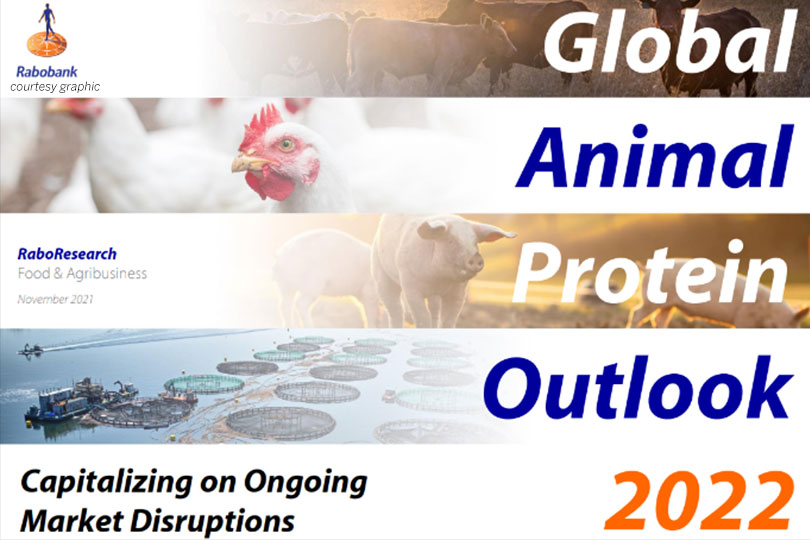By Jennifer Whitlock
Field Editor
The animal protein supply chain will continue to see sustained growth while facing challenges across four key areas, according to Rabobank’s Global Animal Protein Outlook 2022: Capitalizing on Ongoing Market Disruptions.
Trends affecting supply chain costs include a consumer-led push for “more sustainable” animal proteins, biosecurity efforts and lingering effects of COVID-19.
Animal feed, labor, energy and freight remain major influencers on higher input costs, according to the report. Those who react quickly and dynamically will prosper, but Rabobank cautioned those who remain rooted in pre-pandemic routines will likely be left behind.
“This next year has the potential to accelerate structural change as a result of escalating costs,” Senior Animal Protein Analyst Christine McCracken said. “Success will most likely go the players that adapt to the changing business environment; embracing consumer preferences for sustainability and preparing for a surge in demand as economies continue to reopen and adjust following COVID-19-induced lockdowns.”
The pork, poultry and aquaculture sectors are expected to drive production growth, according to Rabobank. Pork will expand more slowly, due to the ongoing recovery of China’s swine herd in the wake of a massive African swine fever outbreak.
Beef and wild-caught seafood production will contract slightly but remain mostly stable, Rabobank’s report states.
North America
In North America, the U.S. beef cattle herd is expected to shrink 1.8% year-over-year to around 30.6 million head in January 2022. Canada’s cattle herd is predicted to decline similarly, but drought in Mexico will slow down any beef cattle growth in that nation.
North American poultry is expected to see another strong year, and Rabobank analysts forecast 2.4% year-over-year growth for U.S. broiler productivity in 2022. Tight supplies and more export growth will support continued price increases in this sector. But broiler production in Mexico will likely shrink due to high costs and weak demand, the group noted.
Pork production growth is more uncertain in the U.S., where hog farmers are facing many regulatory uncertainties and rising costs. U.S. and Canadian demand should keep pork values relatively strong. However, economic weakness may keep pork consumption in Mexico lower.
“Although demand will be strong and support livestock prices, North American feed costs are expected to remain at high levels,” Don Close, senior animal protein analyst, said. “Producers will need to be vigilant on finding opportunities to lock in profitable margins.”
The entire report is available here.

